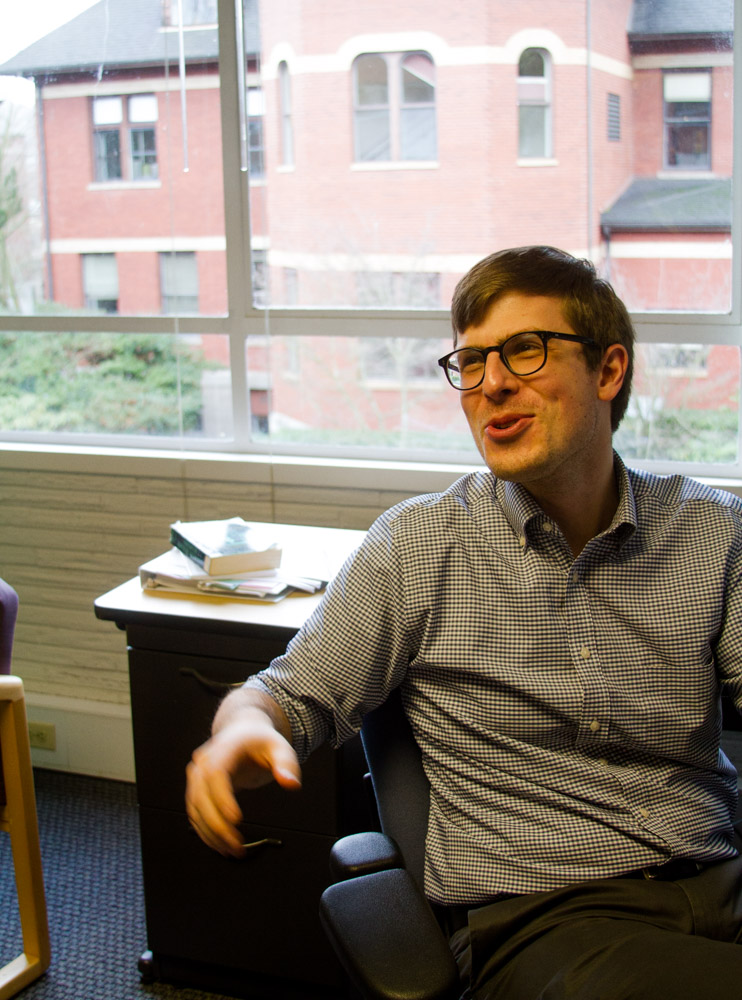Journalism: basis of communication
January 30, 2020

Dr. Bellinger, Assistant Professor of Communication, believes that the newspaper is a vital part of healthy community discourse.
Despite journalism’s original purposes, the newspaper has developed in a way that is important to maintaining functioning communities, both for students and society as a whole.
“Day-to-day communication is best done through a newspaper,” communications professor Matthew Bellinger said.
He hopes to help his students understand what he thinks is the key to living peacefully with others as a healthy community: communication.
Bellinger is a researcher in communication theory; more specifically, the relationship between communication and technology and how that relationship becomes routine for a majority of the population in a constantly changing society.
Throughout all of the technological advancements humans have made in the last few centuries, Bellinger believes newspapers have not drifted from relevancy in systems of communication.
Newspapers serve as a source of information for everyone involved, ranging from young to old, students to professors, anyone willing to learn from the media. It creates an interactive community that can both reaffirm old ideas and introduce new ideas to a diverse group of people with ever-changing perspectives.
Students have the freedom to express ideas, thoughts and reviews on events happening on campus. Faculty and staff members have a means to be responsive and receptive to student concerns.
As an accessible form of discussion, the newspaper ties the entire community together.
“There is a hope for faculty to see it as a voice for the student body,” Bellinger said.
Students can use a newspaper as a way to express their thoughts, and share them with the community. The medium creates a space for political and social movements, such as policy change, marches or any events that promote awareness of topics that are harder for most to hear, process and accept.
Bellinger said that journalism was not always used for the purpose of communication, though.
Newspapers were first propaganda and tools for political parties, focusing on powerful political players: literate and wealthy people. This was notably used by political figures like Alexander Hamilton, among other founding figures of the United States.
Bellinger explained that, as literacy was hardly close to being widespread at the time, the partisan press leaned on the wealthy, who supported the press and fueled this extension of campaigning. In the 19th-century, multi marketing strategies were introduced in the press and newspapers began to be supported by ad revenue, not just the rich.
News became less about politics, and more about the money.
“The 1940s was a period of reflection on commentators and the press’ role in democracy,” Bellinger said.
According to Bellinger, the introduction of social media in modern society brought changes in both freedom of press and freedom of expression, with greater access to various populations and opinions for most to see.
With social media, the ease of the internet gives readers direct access to journalists as well as outside sources and opinions, so why do students still create and read newspapers? He questioned whether those who choose not to read printed newspapers consumed news through social media platforms instead, if at all.
Modern journalism, both on and offline, has allowed for the existence of “communicative capitalism,” Bellinger said, referencing Jodi Dean’s working theory on the topic.
“Contemporary journalism creates a circulation of messages within a community that has less care for quality and content, which disincentivizes slower, bigger projects and focuses more on the attention-grabbing ones,” Bellinger stated.
Bellinger, again in reference to Dean’s work, suggested that a press’ apathy for quality content, and their increased motive for financial success, creates a focus on shorter stories and clickbait that will grab an audience’s attention.
Both national and student journalism have goals to communicate with their audiences and provide information otherwise inaccessible to their communities. But, while the national press holds financial interest, student journalism is a product of a desire for a functioning system of communication, and a healthy community.

























































































